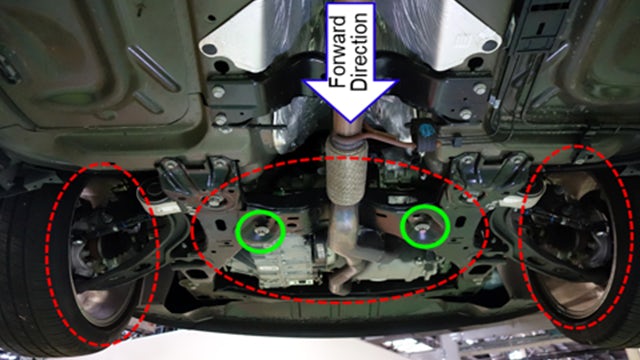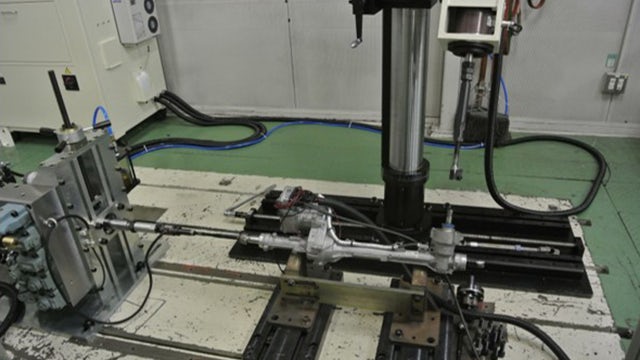Using Simcenter Engineering and Simcenter Testlab to reduce testing time by 66 percent
Siemens solutions enable Hitachi Automotive Systems to significantly extend its engineering team’s capabilities
Hitachi Automotive Systems
Hitachi Automotive Systems, Ltd. is engaged in the development, manufacture, sales and services of automotive components, transportation-related components, industrial machines and systems, and offers a wide range of automotive systems, including powertrain systems, chassis systems, and advanced driver assistance systems.
http://www.hitachi-automotive.co.jp/en/- Headquarters:
- Kanagawa, Japan
- Products:
- Simcenter Products, Simcenter Testlab
- Industry Sector:
- Automotive & transportation
By shifting the vehicle testing from our team to Siemens, we have been able to significantly reduce our product development costs.
Hitachi Automotive Systems, Ltd.
Engineering the cars of tomorrow
As cars are being transitioned from human-controlled and gas-powered to autonomous and electric, their engines are becoming smaller and quieter. The cars of yesterday came equipped with large, noisy engines that masked the sounds and vibration coming from other components such as steering systems.
The movement to autonomous cars also means the driver no longer needs to focus on the road. With the driver’s mind free to pursue other activities while the car is in motion, various sounds will seem much louder and more noticeable than in the past.
Until recently, noise was an issue that automotive original equipment manufacturers (OEMs) and their suppliers did not need to think about. However, in order to stay competitive, automakers must prioritize noise, vibration, and harshness (NVH) and integrate it into their designs much earlier than they have traditionally done.
Out with the old
Engineers have traditionally used steel test benches to analyze NVH in automotive components. However, once the component is moved from the bench to a car, the vibration often increases significantly. As a result, it is extremely difficult to predict noise and vibration levels alone.
Additionally, due to the relatively new nature of quiet cars, noise, and vibration has historically been one of the last areas that automakers have analyzed. This means that NVH issues are often only addressed right before production, which is disruptive and expensive.
“With limited in-house resources, it is difficult to do technology development on top of applied development,” says Hayuru Inoue, senior engineer in the CAE Technology Development Department at Hitachi Automotive Systems, Ltd.
The steering system engineering team at Hitachi Automotive Systems set out to find a better way to predict NVH.

In with the new
Hitachi Automotive Systems partnered with Simcenter™ Engineering to use component-based transfer path analysis (TPA) to predict the steering system’s NVH inside an actual vehicle rather than just analyzing the data on a testing bench. Siemens worked with Hitachi Automotive Systems to “split” the components apart to see how the steering system was behaving and how that affected overall NVH in the vehicle.
The Hitachi Automotive Systems team also had access to the component-based TPA tool inside of Simcenter Testlab™ software, which is part of Siemens Xcelerator business platform of software, hardware and services. Although it is possible to perform TPA inside this tool, many teams struggle with measuring the data. The engineering team at Siemens was able to provide the expertise that Hitachi Automotive Systems needed to not only generate data, but measure and interpret it.
Extending the team
Working with Siemens, Hitachi Automotive Systems was able to significantly extend its engineering team’s capabilities. By partnering with Simcenter Engineering, Hitachi Automotive Systems gained access to the latest applications and methodologies, freeing up its time to focus on NVH prediction for each component.
“By shifting the vehicle testing from our team to Siemens, we have been able to significantly reduce our product development costs,” says Aoi Nakanome, engineer at Hitachi Automotive Systems. “Product improvement guidelines have been created, and we will begin to apply them to new products as well.”
Inoue expects that by partnering with Siemens, tests that used to take three days can be reduced to just one. “We anticipate this initiative with Siemens will allow us to reduce the number of prototypes from at least four to just two. That would result in a 50 percent time reduction in prototyping, component testing, and vehicle testing,” he states.

Looking forward to the future
“We believe the NVH restrictions for automobiles will only get stricter,” says Inoue. “Noise that is not only loud but also uncomfortable for passengers will become more of an issue.”
The Hitachi Automotive Systems team is planning to work with Siemens to develop subjective ratings for noise. “If we can consider the subjective rating of the noise, analyze it using metrics, and improve that noise in Simcenter, we will be able to greatly improve the development efficiency,” Nakanome explains.
“We will continue to use Simcenter. With Simcenter we can start from computer-aided design and seamlessly transition to acoustic simulation,” says Inoue. The team plans to connect its models from Simcenter to test to make proposals for future product improvements.
We will continue to use Simcenter. With Simcenter we can start from computer-aided design and seamlessly transition to acoustic simulation.
Hitachi Automotive Systems, Ltd.
